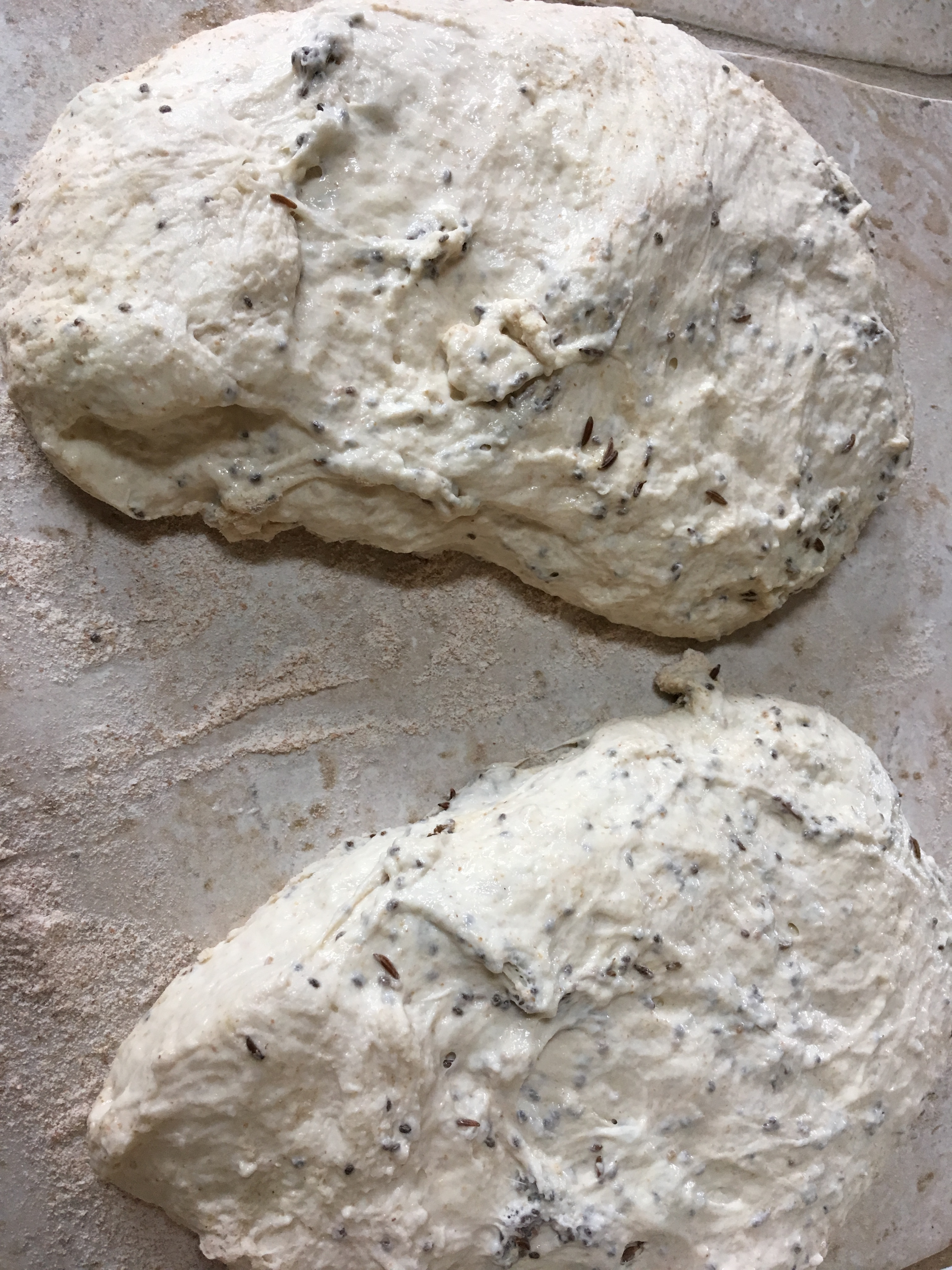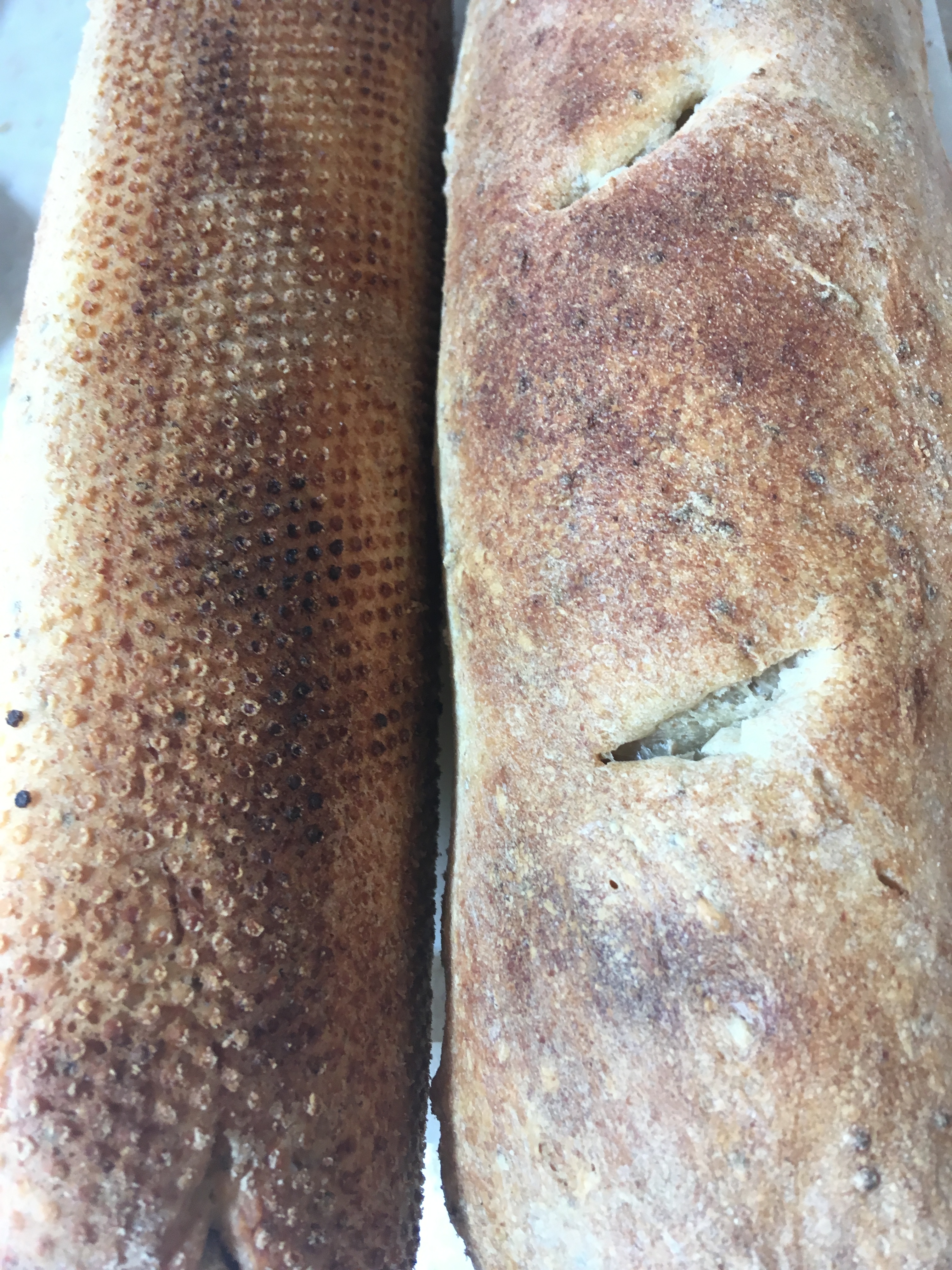
Continuing with alternative baking methods/bread, I decided to attempt focaccia. Spoiler alert: not perfect, but perfectly acceptable in a pinch.
In my search for a suitably-sized vehicle, I discovered that out of the dozen or so bread/loaf pans accumulated in decades of marriage — this not being the first for either of us, though that may not explain the excessive number — only one actually fits in the toaster oven.
Dimensions, for anyone else who is oven-less, or wants to give this a try (the rest of you can enjoy a short snooze):
- Length: Exterior including handles 9.75″/25 cm; interior 8.25″/21 cm
- Width: Exterior 5″/12.25 cm; interior 4.25″/11cm
- Height: 2.5″/6.5 cm
Ingredients
(Dough)
- 1 cup warm water (not too hot; you don’t want to cook the yeast)
- 1 teaspoon dry yeast
- 2- 2 1/4 cups all purpose flour
- 1 teaspoon salt
- 1 tablespoon (more or less) extra virgin olive oil (EVOO)
(Topping)
- 12 pitted olives, Kalamata or Castelvetrano, as you prefer, sliced
- 1-2 tablespoons EVOO
- 1-2 teaspoons chopped fresh rosemary (or 1 teaspoon dried)
- Kosher salt or fleur de sel
Method
- Place warm water in a bowl. Sprinkle the dry yeast, stir and let it dissolve for about 10 minutes.
- Add 2 cups of flour and 1 tsp salt to the bowl and stir. The dough will be sticky.
- Turn out onto a floured surface and knead until smooth and elastic, about 8-10 minutes. Add more flour as needed. Shape dough into a ball.
- Pour a little olive oil into your bowl, add the dough, and roll it around until it’s lightly coated.
- Cover with plastic wrap and let it rise in a warm area until doubled, approx. 1 1/2 hours. (First rise)
- Punch it down, knead into a ball, return to the bowl, cover with plastic and let it rise in a warm place until doubled. This takes about 45 minutes. (Second rise)
- Pour a small amount of olive oil into your loaf pan and spread it around to coat the inside.
- Once the second rise is finished, punch it down lightly, transfer it to the loaf pan and let it rest for 10 minutes.
- Drizzle about 1 tablespoon of olive oil over the top of the dough. Sprinkle with chopped rosemary and add the olives on top. Let it rise uncovered for about 25 minutes. (Third rise).
- Using your fingertips, press indentations into the surface of the dough. The oil will pool in the indentations. Sprinkle lightly with coarse salt
- Bake at 450 degrees F (230C I think?) for about 15-20 minutes. Mine began to burn at 20 so keep an eye on it!
- Serve warm with more olive oil. Adding garlic and herbs (oregano, rosemary, thyme) to the oil is even better.





























































